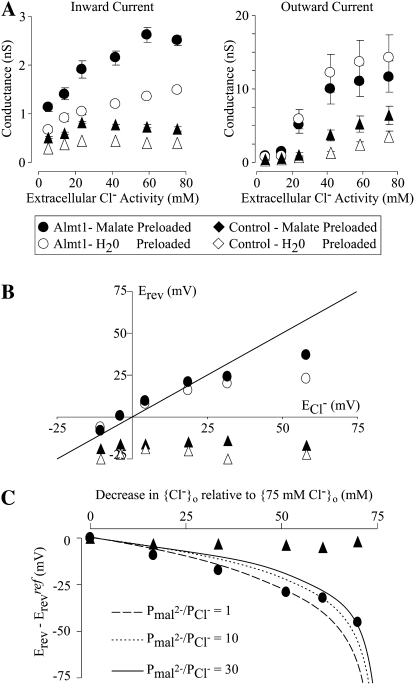Figure 8.
Conductivity and selectivity properties of the TaALMT1-mediated currents. A, Effect of {Cl−}o on the conductance (G) of the inward (left) and outward (right) currents in TaALMT1-expressing (circles) and control (triangles) cells. The conductance was estimated by linear regression of the six most positive test potentials from the I/V relationships shown in Figure 7B. B, Erev from TaALMT1-expressing (circles) and control (triangles) cells preloaded with malate (black symbols) or water (white symbols), plotted as a function of the ECl−, assuming an internal Cl− activity of 60 mm. Erev values correspond to those shown in Figure 7C. The line represents the theoretical values when ECl− equals Erev. C, Shift in the observed Erev plotted as a function of the overall change in {Cl−}o. The shift in the observed Erev (Erev − Erevref) was defined as the difference between the recorded Erev at a given {Cl−}o and the recorded Erev at the highest {Cl−}o (i.e. Erevref). Likewise, the decrease in {Cl−}o was defined as the differences between the highest {Cl−}o tested (i.e. 75 mm) and that present in the bath solution in each case. The lines represent the theoretical changes in Erev expected by decreasing {Cl−}o at a given constant Pmal2−/PCl− value (as indicated). The theoretical values were calculated from expected shifts in the net current (i.e. the sum of ICl− and Imal2−) predicted from the GHK current equation (Equation 14.5 in Hille, 2001), as {Cl−}o varied and {Cl−}i and {mal2−}i remained constant at 60 and 4.5 mm, respectively.

